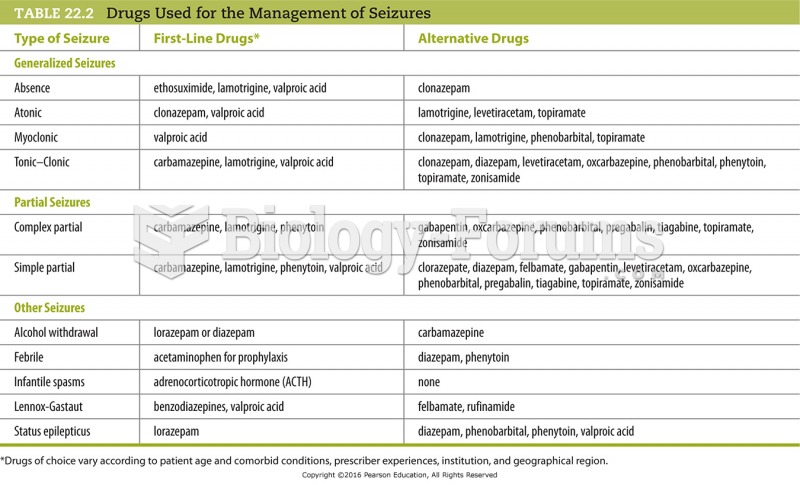Answer to Question 1
Correct Answer: 2
Rationale 1: Ethosuximide (Zarontin) is a succinimide used for absence, myoclonic, and akinetic seizures.
Rationale 2: Secobarbital (Seconal), a barbiturate, is used for the emergency control of seizure activity caused by conditions such as tetanus or poisons.
Rationale 3: Clonazepam (Klonopin) is a benzodiazepine and is used for petit mal and minor motor seizures, as well as panic disorder.
Rationale 4: Diazepam (Valium) is a benzodiazepine and the drug of choice for status epilepticus; it is also used for anxiety and muscle spasms.
Global Rationale: Secobarbital (Seconal), a barbiturate, is used for the emergency control of seizure activity caused by conditions such as tetanus or poisons. Ethosuximide (Zarontin) is a succinimide used for absence, myoclonic, and akinetic seizures. Clonazepam (Klonopin) is a benzodiazepine and is used for petit mal and minor motor seizures, as well as panic disorder. Diazepam (Valium) is a benzodiazepine and the drug of choice for status epilepticus; it is also used for anxiety and muscle spasms.
Answer to Question 2
Correct Answer: 4
Rationale 1: Tegretol is the drug of choice for tonic-clonic and partial seizures because it produces fewer adverse effects than does phenytoin or phenobarbital.
Rationale 2: Tegretol is the drug of choice for tonic-clonic and partial seizures because it produces fewer adverse effects than does phenytoin or phenobarbital.
Rationale 3: Tegretol is the drug of choice for tonic-clonic and partial seizures because it produces fewer adverse effects than does phenytoin or phenobarbital.
Rationale 4: Carbamazepine (Tegretol), a phenytoin-like drug, is the drug of choice for tonic-clonic and partial seizures because it produces fewer adverse effects than does phenytoin or phenobarbital.
Global Rationale: Carbamazepine (Tegretol), a phenytoin-like drug, is the drug of choice for tonic-clonic and partial seizures because it produces fewer adverse effects than does phenytoin or phenobarbital.






